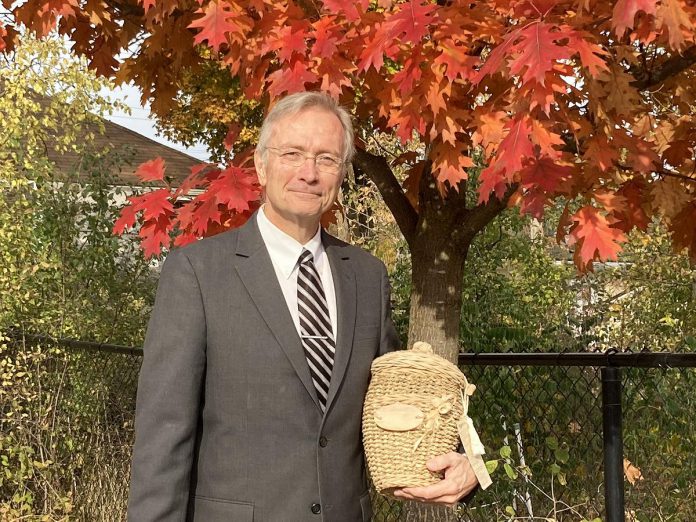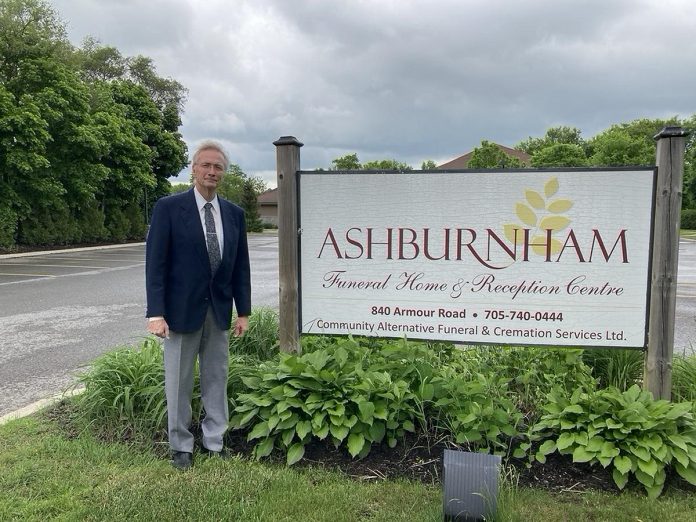
Throughout our lives, we make big decisions by weighing the impacts of our choices: impacts on our health, impacts on our pocketbook, impacts on the people we love and increasingly, impacts on the world around us.
Final decisions related to end-of-life care are deeply personal with more and more people requesting options that align with their values — including caring for the environment.
Aquamation, also known as alkaline hydrolysis, is emerging as a sustainable alternative to traditional burial and cremation methods.
This process, available locally in Peterborough and the Kawarthas, offers a greener option for those seeking end-of-life care as it has significantly lower environmental impacts in comparison to conventional methods.
Aquamation uses water, alkali, heat, and pressure to achieve decomposition with a final outcome very similar to that of cremation. However, while both cremation and aquamation release greenhouse gas emissions, the aquamation process produces far fewer emissions.
This makes it an attractive option for those concerned about their carbon footprint.
GreenUP home energy program manager Clara Blakelock’s grandmother passed in 2020 at the age of 94. Aquamation was presented to her family as a more sustainable option to cremation.
“We decided to choose it because it just seemed to make sense to us,” shared Susan Blakelock, Clara’s mother. “We knew that my mother would have wanted to have the least environmental impact possible.”
Aquamation’s environmental benefits
Reduced harmful emissions
As a by-product, cremation releases pollutants, including carbon, into our atmosphere. Aquamation, on the other hand, uses a water-based process that doesn’t result in the release of harmful gases.
Lower energy consumption
The energy required for aquamation is estimated to be up to only 10 per cent of conventional, flame-based cremation. This reduction in energy consumption translates to a far smaller carbon footprint.
No toxic chemicals
Burial often involves embalming fluids, which can leach into soil and groundwater. Aquamation does not require these chemicals, but if they are used, they are fully broken down, resulting in a cleaner process.
How aquamation works

The aquamation process involves placing the deceased person in a stainless steel chamber filled with a solution of water and potassium hydroxide.
The chamber is heated and pressurized over several hours, which reduces the contents to basic chemical components.
What remains is processed into a fine paper white powder, which can be returned to the family.
Local options and community response
Aquamation represents a significant step forward in sustainable end-of-life care for our community. As with Clara’s family, many residents have responded positively to the availability of a choice that more readily embraces their priorities.
Other options for eco-friendly end-of-life care include urns made of decompostable materials, basic wooden or cardboard caskets, and interment in a green burial ground, several of which are being established in the region.
In Peterborough and the Kawarthas, the growing popularity of green end-of-life care options are part of a broader commitment to sustainability.
The City of Peterborough, Peterborough County, and the City of Kawartha Lakes all have climate-related plans aimed at reducing greenhouse gas emissions and promoting eco-friendly practices. By choosing aquamation and other eco-friendly alternatives, we can reduce our environmental impact and contribute to a healthier planet as a lasting and final life decision.

Co-author John Cunningham owns Kawartha Aquamation, a lead member of GreenUP’s Green Economy Peterborough (GEP) program. GEP works with business owners to understand and strategically implement actions to reduce climate impact and increase efficiency. To learn more about what GEP can do for your business, email jackie.donaldson@greenup.on.ca or visit www.greeneconomypeterborough.ca.


























